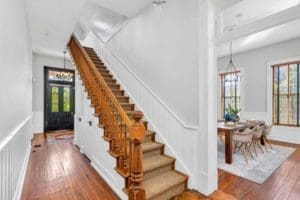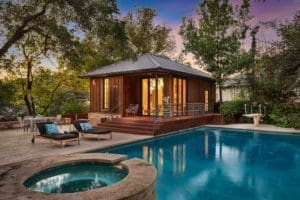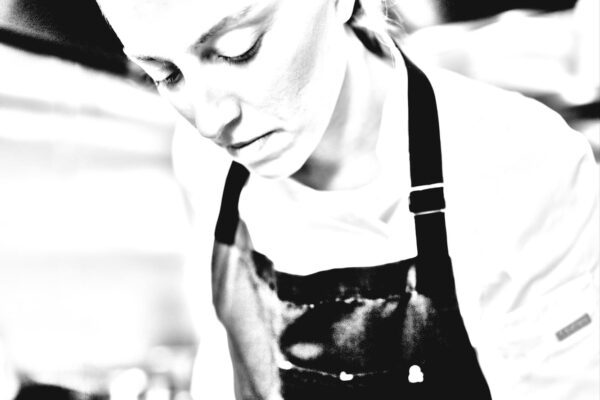If Walls Could Talk
The Lindemann home inspired local architect’s career.
Words by Jessi Devenyns Photos by Vivid Image Photography
Few structures in Austin could inspire a more profound spark of love for historic architecture than the Lindemann home. A Victorian structure built by German immigrants in 1887, today the sweeping wrap-around porch is screened by a row of hedges and tucked upon a hillside.
The story of the home is 132 years long filled with characters from German immigrants to neighborhood barbers. For one man, the home’s story begins in the 1970s, when Tom Hatch, who is now a partner at Hatch + Ulland Owen Architects, worked to modernize the dwelling for the 20th century. As a young architect, Tom said he lived upstairs, which is where he said he fell in love with the building’s wainscoted rooms and burnished pine floors. In fact, he loved it so much that in 1986, he bought the property from the architecture firm that he had previously worked for and set up shop where he had learned the craft the decade before.
Since the house is 3500 square feet, however, Tom rented several of the rooms to other local lawyers, housing advocates, and architects to create a hive of what he calls “socially responsible” activity. While most of his time was spent designing, he remembers a lot of it was also spent on the front porch with his neighbors.
Tom shares that at some point he became the neighborhood barber. “Just because I love cutting hair,” he laughs with a gravelly murmur. “It’s sculpting of course, and the price is right.” Tom never charged for his services. Through the years, he became a steady member of the neighborhood and eventually chose to make the house he had helped lovingly restore into his home. He added porch railings and re-plastered the walls, taking care to highlight and not obscure the gingerbread details throughout the home that are reminiscent of turn of the century German architecture.
“Many years later I was married, and my wife and I moved in there and turned it into our home,” Tom recalls. When the house transformed into his full-time home, Tom remembers installing a few personal touches like a clawfoot tub with a moat around it. “It was so you can fill the tub right up to the edge,” he explains. Some of the original features he left were the coal burning fireplaces in the front two sitting rooms of the property.
Those two fireplaces, although functional, set in motion the fate of this house outside of the original Lindemann family. Laura Lindemann, the daughter of Bernard Lindemann who built the home on the hill, swished past the cast iron fireplaces one December day in 1951 and perished from the flames that caught her skirts. Since then, the home toppled from owner to owner until it landed with Tom in the 1980s.
Despite the tragic nature of the home’s history, the tale became the catalyst that enticed Tom to dig into the stories of Austin and eventually become one of the premier historical restoration architects in the city. Since his first foray into restoration 47 years ago, Tom has worked to restore some of the city’s most important pieces of history including the facades of Congress Avenue and the Pease Mansion. However, his heart has always been on the Eastside, where he says he has spent his days and nights for the most part since 1972.
Did You Know?
The four
Contact:
Hatch + Ulland Owen Architects
(512) 474-8548
1010 East 11th
info@huoarchitects.com
















